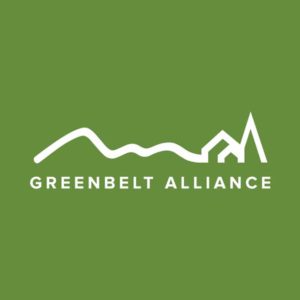FOR IMMEDIATE RELEASE: April 2, 2014
New report ranks major metropolitan areas, shows region’s development patterns linked to greater prosperity, health, and quality of life
CONTACT:
Matt Vander Sluis, mvandersluis@greenbelt.org, Greenbelt Alliance, 707-628-3324
Jeff Hobson, jeff@transformca.org, TransForm, 510-682-4868
Craig Chester, cchester@smartgrowthamerica.org, Smart Growth America, 202-215-8858
Washington, DC—The greater San Francisco Bay Area is among the least sprawling in the country according to a new report out today from Smart Growth America—and that’s great news for our region’s families.
Measuring Sprawl 2014 examines development in 221 major metropolitan areas in the United States, and ranks each region’s development on a national index.
San Francisco and surrounding cities rank second in the national index. The South Bay ranks 24th and the East Bay ranks 25th. In the North Bay, Sonoma County lags behind at 63rd.
“Today’s findings demonstrate the Bay Area’s progress in creating thriving, walkable neighborhoods and saving our treasured landscapes from sprawl,” said Matt Vander Sluis, Regional Director at Greenbelt Alliance. “Yet over 300,000 acres in the Bay Area are still at risk of sprawl development—an area 10 times the size of San Francisco. Working together, we can make sure the region grows in ways that protects these lands and makes our neighborhoods more sustainable, healthy, and vibrant for all.”
The new report also examines how sprawl relates to several quality of life factors. The researchers found that individuals in more compact, connected metro areas have greater economic mobility; spend less on the combined expenses of housing and transportation; have more transportation options; and lead longer, healthier, safer lives.
“We know that when people live in more compact, walkable places with great access to public transportation, they drive a lot less and save a lot of money on transportation,” said Jeff Hobson, Deputy Director at TransForm. “In fact, Bay Area residents with good access to transit save $5,450 on average per household.”
“But more people than ever want to live in compact, walkable places, so prices keep rising and threatening to displace our neighbors,” continued Hobson. “We’re not building remotely enough homes in infill areas to address the affordability crisis. We need to provide more homes and protect the affordability of the ones we have, as we continue to stand up to sprawl.”
“Plan Bay Area—the region’s recently-adopted blueprint for growth—calls for focusing the next generation of new homes and jobs in transit-rich areas while avoiding development on the Bay Area’s natural and agricultural lands,” Vander Sluis explained. “Today’s findings confirm the many benefits that can come from achieving the Plan Bay Area vision.”
“Smart growth strategies are about making life better for everyone in a community,” said Geoff Anderson, President and CEO of Smart Growth America. “If policymakers are looking for ways to lower costs for their constituents, improve public health and support their broader economy, they need to be thinking about how to improve their development.”
See the full rankings and download the report at
www.smartgrowthamerica.org/measuring-sprawl.
Greenbelt Alliance is the Bay Area’s leading organization at taking a regional vision for protecting land and growing smart, and applying it locally. As the champion of the places that make the Bay Area special, we ensure the right development happens in the right places. We work to protect the region’s open spaces and make sure cities grow in a way that creates great neighborhoods for everyone. www.greenbelt.org
TransForm is California’s leading transportation advocate, working to bring excellent transportation choices and greater affordability to communities across the state. www.TransFormCA.org
Smart Growth America is the only national organization dedicated to researching, advocating for and leading coalitions to bring better development to more communities nationwide. From providing more sidewalks to ensuring more homes are built near public transportation or that productive farms remain a part of our communities, smart growth helps make sure people across the nation can live in great neighborhoods. For additional information, visit www.smartgrowthamerica.org.
# # #





